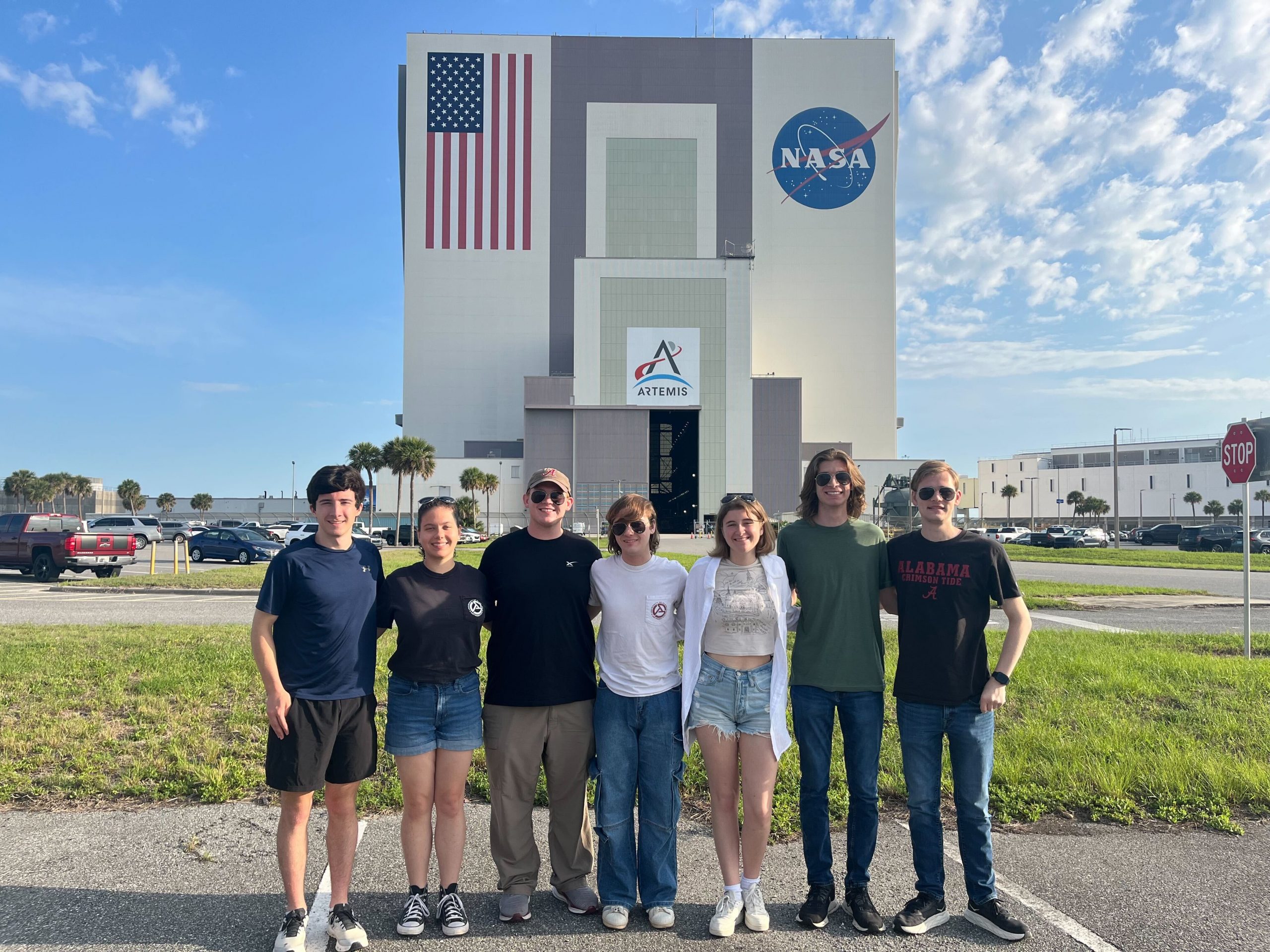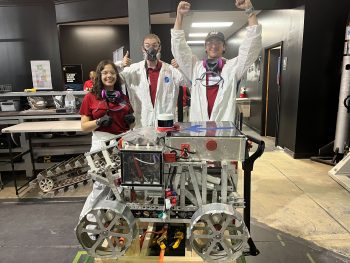
The Alabama Astrobotics Team recently returned from NASA’s 2025 Lunabotics Challenge with national recognition for its innovative approach to lunar robotics and systems engineering.
Hosted annually at NASA’s Kennedy Space Center in Florida, the Lunabotics Challenge invites collegiate teams from across the country to design and build robots capable of autonomously navigating and excavating simulated lunar terrain. The competition plays a vital role in supporting NASA’s long-term goal of sustainable lunar exploration.
This year’s challenges tasked teams with creating excavation and construction rovers. Each robot had to build the largest possible berm using simulated lunar material, including moon dust and boulders. While the overall challenge remained the same as previous years, scoring rules related to berm volume and autonomy were slightly adjusted.
Over the past academic year, the Alabama Astrobotics team designed, built and refined a robotic excavator capable of both autonomous and remote-controlled operation. The team’s robot, MARTE-C, was engineered to perform in simulated lunar environment filled with dust-like regolith and unpredictable terrain.

Team lead Tristan Fuchs said, “In the week leading up to the competition, team members spent every waking hour testing the robot, making final adjustments to our software, and pushing the limits of our hardware to ensure we brought the best possible version of our robot to the competition.”
The team stood out among top-tier engineering programs, earning recognition in multiple categories throughout the weeklong event. The team earned first place in the project management plan category, second in autonomy and third in mining/construction. They also received honorable mentions for both their technical presentation and systems engineering report.
The team overcame multiple challenges throughout the competition to deliver a strong finish. On the first day of preliminaries, the team finished in 15th place, which was just outside the cutoff to advance to the next round. Undeterred, the team worked tirelessly throughout the night to troubleshoot and resolve issues with MARTE-C. Their hard work paid off, and by the end of preliminaries, they had climbed to fifth place
In addition to technical experience, members of the team gain valuable professional skills.
“Students in Astrobotics get hands-on engineering experience and the opportunity to explore different fields they might be interested in,” Fuchs said. “We also practice effective communication and collaboration through an interdisciplinary project that helps build strong teamwork skills.”
As the team begins preparations for next year’s Lunabotics Challenge, both students and faculty are focused on continued growth.
“Next year, we hope to have a fully autonomous system,” said Fuchs. “We made tremendous progress this year, so I think we’ll be able to get there. And of course, we always want to create a system that can move more material and build a better berm than the last.”
Dr. Rajiv Doreswamy, faculty advisor of Alabama Astrobotics stated, “We’ve previously won this competition nine times, and we’d love to bring that title back to Alabama,” said Doreswamy. “We’re aiming to build on our strength in autonomy, push the robot’s capabilities even further and recruit more students to get involved with Alabama Astrobotics.”